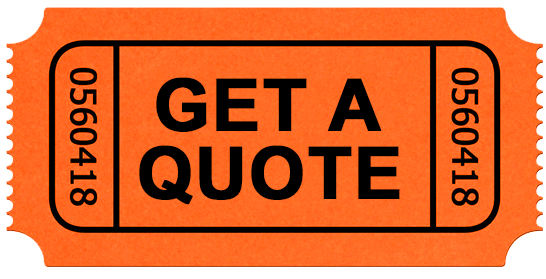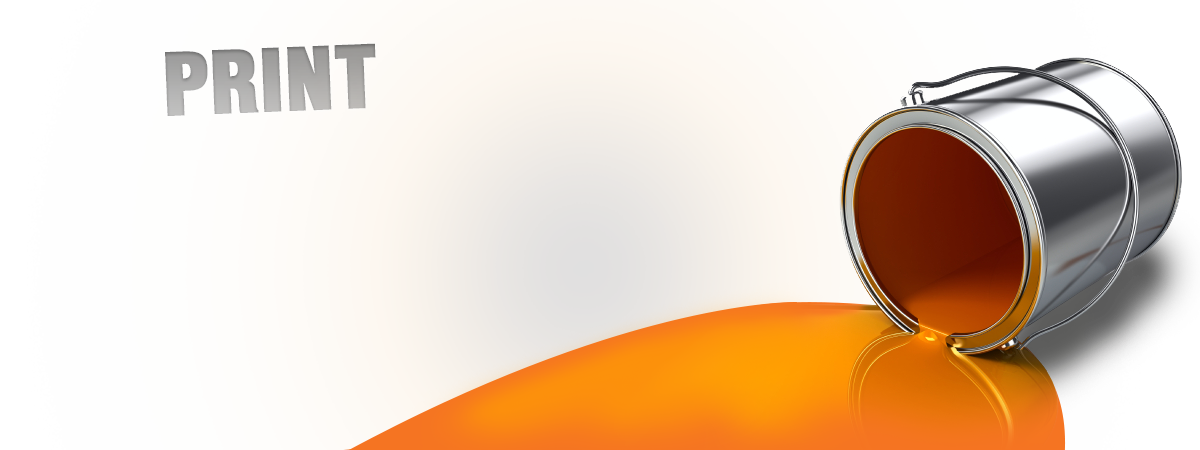Designing for print—whether it’s a logo, a brochure, business card or magazine advertisement—is a whole other world from designing for the web. There are a number of technical differences, there’ll be changes in the creative process and there are some important things you ought to keep in mind before deciding on a print concept. Instead of bragging about how great our print designs are, we figure we’ll take a few moments to let you in on some things, so you know what to expect when you deal with print. Let’s start with a little technical stuff.
Connecting the Dots, Per Inch
Printing presses are far more exacting than computer screens: what looks great on your website often looks shabby and jagged when it’s professionally printed. That’s because printing presses need a lot more graphic information than computer screens do. Computer monitors can only accurately show 72 (Macs) to 96 (Microsoft) dots per inch of graphic information; anything more is just wasted because a monitor just doesn’t have enough lines of resolution to render a more accurate image. A modern printing press, on the other hand, needs at least 300 dots per inch to turn out crisp images. So, don’t copy anything off the web and expect it to print well. You can use most digital cameras to get a print-worthy image, because most are set to at least 300 dots per inch. But please don’t take a picture of your monitor with your website up; that just won’t work.

The Vector Sector
Computer monitors use pixels—tiny lights in the monitor—to render everything you see. And when you try to make a pixel-rendering really big, it begins to look really bad. One of the biggest reasons for that is that there’s only so many pixels per inch in a monitor: so curved shapes start to have their curves “squared-off” as they get bigger and bigger. That makes them look jagged on the edges between curves and blurry overall. The print world, however, doesn’t deal in pixels. Instead, the boundary of every shape, font or outline is a vector. A vector is a geometric description of a line or shape expressed in an quadratic equation—a lot like the x and y axis graphs and their transformations you tried to learn in grade twelve algebra (remember y=x2+bx+c?). When you make a vector bigger, you’re not stretching-out dots or pixels, you’re increasing the values stored in the equations. This way, you can make a vector as big or as small as you want and it always looks perfect—no stray pixels to worry about. True, you can still make and view vectors on a computer screen, but, as we said above, they’ll only be accurate to about 72 dots per inch. (Unfortunately, web browsers just can’t handle vectors—at least not yet.) Printing presses can render images on paper that are truly 300 dots per inch or much more.

The only problem with these vectors—other than they don’t accurately display on a monitor—is that every single line or shade of tone differentiation in a graphic has to be painstakingly drawn by hand in sophisticated software like Adobe Illustrator. That’s a lot of work. Furthermore, photographic images of real things in the world—as of yet—can’t be rendered into vectors at all, so all you can do is use the highest dot per inch photograph you can get for print. Now, all this may sound as boring as watching someone else watching paint dry, but knowing about it can save you a lot of frustration and misunderstanding later in life, just like grade twelve math.
Drawing an Accurate Conclusion
Another more obvious way print design differs from web design is in permanence. Don’t like your web design? You can change it. Need to update your blog text, you can edit it. But try un-printing your brochure. Or, how much market share does it cost you to re-brand because the logo you designed last year doesn’t look 21st century enough anymore? The obvious point is, with print you’ve got to get it right the first time: there are no take-backs. So, unless you’re very familiar with vector graphics programs, bleed marks and host of other printing terms and the whole graphic arts arsenal of principles, it’s a lot cheaper in the long run to go with a professional. We’ll sit down with you and find out all we can about your company, look at other logos or print ideas you like, suggest color schemes and delve into your demographics. Whether it’s a logo, letterhead or a brochure we’ll come back to you with concepts for your assessment and approval. When you’re happy, we’ll give you a high-quality file that you can keep for the future and that all professional printers will recognize.






